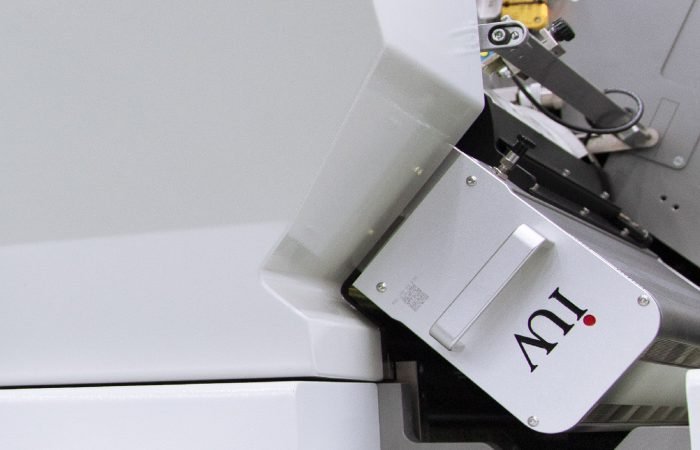Best UV Curing Systems for Narrow Web Flexo Printers: A Technical Guide
Narrow web flexographic printing thrives on precision, speed, and adaptability—qualities that demand equally reliable UV curing systems. As label and packaging markets grow, printers require curing solutions that balance energy efficiency, print quality, and compatibility with sensitive substrates. Modern LED UV technology has revolutionized this space, offering faster curing times, reduced heat output, and lower operational costs compared to traditional mercury-vapor lamps. Below, we explore top UV curing systems tailored for narrow web flexo applications, emphasizing technical innovation and practical performance.
Why LED UV Dominates Narrow Web Flexo Printing
LED UV curing systems emit light at specific wavelengths (365-405 nm), activating photoinitiators in UV inks and coatings without excessive heat. This precision minimizes substrate distortion, making them ideal for thin films, heat-sensitive labels, and shrink sleeves. Unlike conventional systems, LEDs achieve full curing instantly, enabling faster press speeds and reduced energy consumption. For narrow web printers—often handling short runs and variable designs—this translates to fewer defects, higher throughput, and compatibility with sustainable, low-migration inks.
Top UV Curing Systems for Precision Printing
- Phoseon FireEdge FE410
Designed for narrow web presses up to 18″ wide, the FireEdge FE410 combines high irradiance (12 W/cm²) with a compact, modular design. Its air-cooled system eliminates water lines, simplifying integration into existing setups. The FE410 excels in curing opaque whites and thick coatings, critical for premium labels and flexible packaging. With a 365-395 nm wavelength range, it supports a broad spectrum of UV flexo inks while reducing ozone emissions by 90% versus traditional systems. - GEW ArcLED Hybrid
GEW’s hybrid system merges mercury-vapor and LED technologies, allowing printers to switch between modes for diverse jobs. The ArcLED is particularly effective for mixed-substrate workflows, such as printing on paperboard and PET films within the same run. Its “Eclipse” reflector design ensures uniform curing across the web, minimizing edge-to-center discrepancies. The system’s low-energy LED mode cuts power use by 40% during standard label production. - IUV Intelligent LED Curing Solution
IUV LED Curing series focuses on high-speed, high-opacity applications, delivering 25 W/cm² peak irradiance. Its water-cooled design maintains consistent performance during extended runs, preventing thermal throttling. The system’s customized wavelength settings (385-405 nm) optimize curing for specialty inks, including metallic and tactile coatings. IUV’s proprietary optics design ensure UV output efficiency, reducing energy waste, and make long-lasting even curing. - Baldwin LED ProCorr
Targeting eco-conscious printers, the ProCorr uses low-wattage LEDs (395 nm) to cure water-based UV hybrid inks. Its low-heat output suits temperature-sensitive materials like unsupported films and thin-gauge PE labels. The system’s modular LED arrays allow partial activation, slashing energy use by 30% during narrow web or partial-width printing.
Key Considerations for UV System Integration
- Substrate Compatibility: Ensure the system’s wavelength aligns with your ink and material requirements. For example, 395 nm LEDs suit most pigment-rich inks, while 365 nm targets clear coatings.
- Cooling Mechanisms: Air-cooled systems reduce maintenance but may lack stability for 24/7 operations. Water-cooled units offer durability for high-volume environments.
- Footprint and Modularity: Narrow web presses often operate in space-constrained facilities. Opt for systems with stackable or edge-mounted designs.
- Regulatory Compliance: Verify that the system meets RoHS and REACH standards, especially for food-safe or medical packaging applications.
Advantages of Modern UV Curing in Flexo Printing
- Instant On/Off Functionality: Eliminates warm-up delays, reducing job setup time.
- Extended Lamp Life: LED systems last 20,000 hours versus 1,000–2,000 hours for mercury lamps.
- Reduced VOC Emissions: UV curing minimizes solvent use, supporting eco-friendly production.
Final Recommendations
For narrow web flexo printers, investing in a UV curing system requires balancing technical specs with real-world demands. The Phoseon FE410 and AMS CX-4 excel in high-speed, high-opacity environments, while Baldwin’s ProCorr and GEW’s hybrid model offer versatility for mixed workflows. Prioritize systems with modular designs and robust technical support to adapt to evolving print technologies. By aligning UV curing capabilities with production goals, printers can achieve sharper detail, faster turnaround, and lower environmental impact—key differentiators in competitive markets.
For further guidance, consult equipment manufacturers to test systems using your specific inks and substrates. This hands-on evaluation ensures optimal performance and ROI for your narrow web operations.












